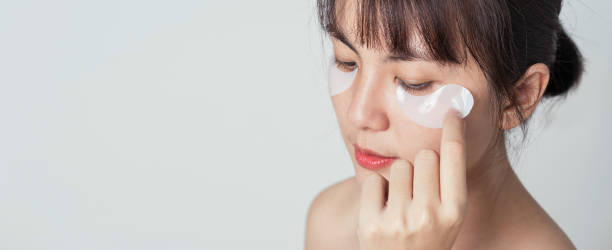
Dark Circles Under Eyes? Here’s How to Minimize Those Shadows
Dark circles under your eyes can be frustrating. They make you look tired, worn out, and can even affect your confidence. But before you resign yourself to a lifetime of under-eye concealer, there are things you can do to brighten your look and reduce the appearance of dark circles.
In this guide, we’ll explore the causes of dark circles, effective treatments for dark circles, and lifestyle changes that can make a big difference. We’ve also included dermatologist-approved tips and product recommendations to help you achieve brighter, more radiant under eyes. https://whereandhowresources.com/
What Causes Dark Circles?
Dark circles can be caused by a variety of factors, including:
- Loss of Volume:
- The Scaffolding Beneath Your Skin:
- Imagine your youthful face like a plump, taut balloon. The smooth, elastic surface is thanks to a supportive network of collagen fibers and fat deposits beneath the skin. Collagen acts like a scaffolding, providing structure and firmness. Fat adds volume and plumps up areas like your cheeks and under-eye region.
- The Aging Process and Volume Loss:
- As we age, unfortunately, both collagen production and fat stores naturally decrease. This breakdown disrupts the supportive network under the skin. Think of the balloon slowly deflating. In the under-eye area, this loss of volume manifests in a few ways:
- Hollowness: The lack of supporting fat creates a sunken appearance directly below the eyes. Light hitting this area creates shadows, making dark circles more prominent.
- Thinner Skin: With less collagen supporting it, the skin under the eyes becomes thinner and more translucent. This allows the underlying blood vessels to show through more easily, contributing to a bluish or purplish tinge often associated with dark circles.
- As we age, unfortunately, both collagen production and fat stores naturally decrease. This breakdown disrupts the supportive network under the skin. Think of the balloon slowly deflating. In the under-eye area, this loss of volume manifests in a few ways:
- The Scaffolding Beneath Your Skin:
Accentuated Lines:
- The loss of volume can also cause existing wrinkles and fine lines around the eyes to become deeper and more noticeable. This further adds to the appearance of fatigue and shadows under the eyes.
- Beyond Age: Other Culprits of Volume Loss:
- While aging is the main culprit, other factors can accelerate volume loss and worsen under-eye circles:
- Sun Damage: Excessive sun exposure damages collagen and elastin (another protein that supports skin structure). This speeds up the development of wrinkles and hollowness.
- Genetics: Some people are naturally predisposed to thinner skin or less facial fat, making them more prone to under-eye circles.
- Lifestyle Habits: Smoking, poor sleep, dehydration, and a diet lacking in essential nutrients can all contribute to collagen breakdown and worsen the appearance of under-eye circles.
- Strained Eyes: Staring at screens for long periods reduces blinking, drying out eyes and dilating blood vessels, creating dark shadows.
- While aging is the main culprit, other factors can accelerate volume loss and worsen under-eye circles:
However, dark circles aren’t just a story of aging and volume loss. Other common causes include:
- Fatigue: One of the most well-known culprits, leading to paleness and shadowing around the eyes.
- Allergies and Hay Fever: These can prompt inflammation and swelling, darkening the area around your eyes.
- Eczema and Dermatitis: Skin conditions that can cause irritation and discoloration due to scratching or rubbing.
- Heredity and Pigmentation Irregularities: Genetic factors can predispose some individuals to darker under-eye circles.
- Sun Exposure: Besides collagen damage, sun exposure can increase melanin production, leading to pigmentation changes under the eyes.
With such a varied list of potential causes, understanding the underlying reasons for your dark circles can be the first step toward effectively addressing them.
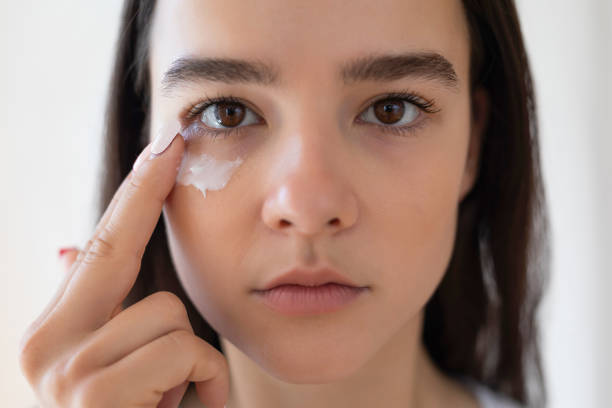
- Hollowness: The lack of supporting fat creates a sunken appearance directly below the eyes. Light hitting this area creates shadows, making dark circles more prominent.
- Thinner Skin: With less collagen supporting it, the skin under the eyes becomes thinner and more translucent. This allows the underlying blood vessels to show through more easily, contributing to a bluish or purplish tinge often associated with dark circles.
Accentuated Lines:
- The loss of volume can also cause existing wrinkles and fine lines around the eyes to become deeper and more noticeable. This further adds to the appearance of fatigue and shadows under the eyes.
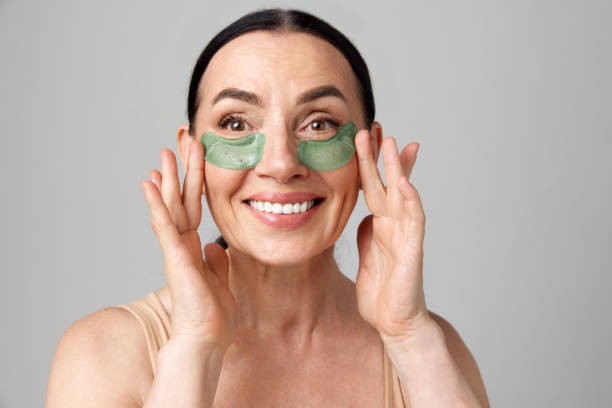
- Beyond Age: Other Culprits of Volume Loss:
- While aging is the main culprit, other factors can accelerate volume loss and worsen under-eye circles:
- Sun Damage: Excessive sun exposure damages collagen and elastin (another protein that supports skin structure). This speeds up the development of wrinkles and hollowness.
- Genetics: Some people are naturally predisposed to thinner skin or less facial fat, making them more prone to under-eye circles.
- Lifestyle Habits: Smoking, poor sleep, dehydration, and a diet lacking in essential nutrients can all contribute to collagen breakdown and worsen the appearance of under-eye circles.
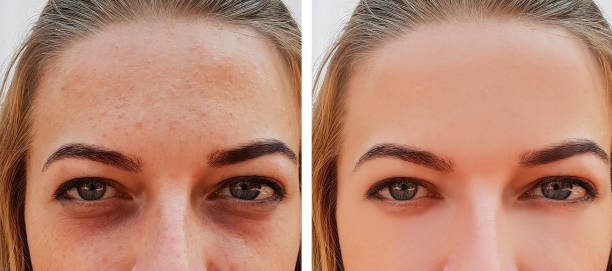
- Strained eyes: Staring at screens for long periods reduces blinking, drying out eyes and dilating blood vessels, creating dark shadows.
What Deficiency Causes Dark Circles?
Dark circles under the eyes can have several causes, but nutrient deficiencies often play a significant role. Two of the most common deficiencies linked to this issue are iron and vitamin B-12.
Iron Deficiency
Iron is crucial for producing hemoglobin, the part of red blood cells that carries oxygen throughout the body. When iron levels are low, your blood may not effectively carry oxygen to the tissues, including those under your eyes. This lack of oxygen can lead to the darkening of the skin in that area.
Vitamin B-12 Deficiency
Vitamin B-12 is essential for maintaining healthy nerve and blood cells. A deficiency in B-12 can lead to poor circulation and pale skin, which makes the underlying blood vessels beneath the thin under-eye skin more visible and results in dark circles.
Other Contributing Factors
While deficiencies in iron and vitamin B-12 are common culprits, several other factors can contribute to the appearance of dark circles:
- Dehydration: Lack of water can cause skin to look more dull and sunken.
- Genetics: You might simply be predisposed to have darker under-eye skin.
- Fatigue: A tired appearance often emphasizes under-eye circles.
Addressing these deficiencies and other factors can often help in reducing or eliminating dark circles. If you suspect that a deficiency might be causing your under-eye circles, it’s worth speaking to a healthcare professional for appropriate testing and recommendations.
Are Dark Circles a Serious Health Problem?
Dark circles under the eyes are a common concern, but they’re not typically a sign of a serious health issue. For most people, these shadows are more about aesthetics than indicating an underlying medical condition.
What Causes Dark Circles?
Several factors can contribute to the development of dark circles, including:
- Genetics: If your parents have dark under-eye circles, there’s a chance you might have them too.
- Lack of Sleep: Insufficient rest can make your skin look dull and your blood vessels more apparent.
- Allergies: Conditions that cause you to rub your eyes can exacerbate the appearance of dark circles.
- Aging: As you age, your skin becomes thinner, which can highlight dark circles.
When to Seek Medical Advice
While dark circles are usually not a cause for concern, there are times when consulting a healthcare professional may be beneficial:
- Persistent Puffiness: If you notice constant swelling along with dark circles, it might be worth discussing with your doctor.
- Sudden Changes: Any abrupt changes in your skin appearance should be evaluated by a healthcare provider.
Managing Dark Circles
For those eager to reduce their appearance, various cosmetic treatments and lifestyle adjustments can help:
- Use Sunscreen: Protecting the delicate skin around your eyes from sun damage can prevent further discoloration.
- Try Retinoids: Over-the-counter products containing retinoids may aid in thickening the skin.
- Consider Fillers: Consulting with a dermatologist about fillers can address volume loss that accentuates dark circles.
Remember, while dark circles can make one appear tired or older, they are generally not concerning from a health standpoint. Adjusting certain habits and exploring skincare options can effectively manage their appearance.
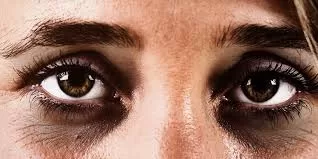
Solutions to Consider:
- While we can’t stop the aging process completely, there are steps you can take to minimize volume loss and improve the appearance of under-eye circles:
- Healthy Lifestyle: Prioritize a balanced diet, adequate sleep, hydration, and sun protection with SPF to support skin health and collagen production.
- Topical Treatments: Eye creams with ingredients like retinol, hyaluronic acid, or vitamin C can help improve skin texture, thickness, and hydration, potentially reducing the appearance of hollowness and shadows. To more effectively target dark circles, consider moisturizers that also include caffeine, known for its ability to constrict blood vessels and reduce puffiness. Vitamin E and aloe are excellent for their soothing and nourishing properties, helping to rejuvenate the delicate skin around the eyes.
- Incorporating these ingredients into your skincare routine can provide a comprehensive approach to addressing dark circles. Look for products that combine these powerful elements to maximize benefits. With a variety of options available, you can tailor your choice to meet your specific skin needs, ensuring optimal results.
- Cosmetic Procedures: For stubborn cases, injectable fillers can restore volume under the eyes, creating a smoother appearance and reducing shadows. However, consulting a qualified dermatologist or cosmetic surgeon is crucial for safe and effective results.
- Each of these treatments offers unique benefits and should be considered based on individual needs and professional guidance.
- These combined approaches, ranging from lifestyle adjustments to professional treatments, can help you manage and improve the appearance of dark circles under the eyes. Consulting with a dermatologist can provide personalized advice and treatment plans tailored to your specific needs.
How to Permanently Reduce Dark Circles
Dark circles can be a pesky concern, but achieving a long-term solution requires a blend of lifestyle changes and targeted treatments. Here’s how you can work towards reducing them effectively:
1. Prioritize Quality Sleep
Ensuring you get 7-9 hours of restful sleep each night is crucial. Sleep helps your body repair and regenerate, reducing the appearance of dark circles.
2. Adopt a Healthy Diet
Incorporate foods rich in vitamin K, iron, and antioxidants, such as leafy greens, nuts, and berries. These nutrients promote healthy blood circulation and skin health.
3. Hydration is Key
Drink plenty of water throughout the day to keep your skin hydrated and flush out toxins that may contribute to dark circles.
4. Topical Treatments
Consider using eye creams with ingredients like retinol, vitamin C, or hyaluronic acid. These ingredients can help brighten the under-eye area and improve skin texture over time.
5. Professional Procedures
For more permanent results, explore treatments like:
- Laser Therapy: Targets pigmentation and boosts collagen production.
- Chemical Peels: Exfoliate the skin to improve its tone and texture.
- Fillers: Address volume loss under the eyes, reducing shadow appearance.
6. Consistency is Essential
Regardless of the method you choose, consistency is key. Regular upkeep ensures sustained results and minimizes the chances of dark circles reappearing.
By incorporating these strategies into your routine, you can effectively diminish dark circles and achieve a refreshed, youthful appearance.
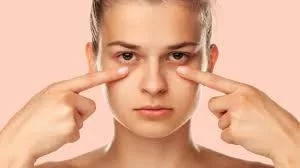
How Does Vitamin K Help with Dark Circles?
Vitamin K plays a significant role in minimizing dark circles under the eyes, primarily through improving blood circulation and reducing blood clotting. This vitamin, known for its ability to regulate blood flow, can diminish the pooling of blood that contributes to the darkened appearance.
A study conducted in 2015 highlighted the benefits of using a pad infused with vitamin K and caffeine under the eyes. This combination was found to effectively decrease both wrinkle depth and darkness under the eyes. The effectiveness of vitamin K in this study suggests it might fortify capillary walls, preventing fluids from leaking into the skin and causing discoloration.
Key Benefits of Vitamin K for Dark Circles:
- Improved Circulation: Enhances blood flow to reduce pooling and discoloration.
- Capillary Strengthening: Reinforces capillaries to prevent blood leakage.
- Anti-inflammatory Properties: Helps in reducing puffiness and swelling, contributing to a fresher look.
Integrating vitamin K into skincare products, especially those formulated for the delicate under-eye area, can offer a natural and effective way to tackle dark circles.
Understanding How Skin-Lightening Creams Work for Dark Circles
Skin-lightening creams are a popular solution for reducing dark circles under the eyes. But how exactly do they work? These creams target hyperpigmentation, which is often responsible for those pesky dark spots.
Key Ingredients and Their Roles
- Azelaic Acid: This ingredient helps to block the enzyme responsible for pigment production, thereby reducing melanin and lightening the skin.
- Kojic Acid: Derived from mushrooms, kojic acid impedes melanin production, effectively brightening the skin around your eyes.
- Glycolic Acid: A gentle exfoliant, glycolic acid removes dead skin cells, allowing your skin’s natural radiance to shine through and reducing the appearance of dark circles.
- Hydroquinone: Known for its potent lightening effects, hydroquinone decreases melanin production, making it a strong player in combatting hyperpigmentation.
Choosing the Right Option
- Prescription vs. Over-the-Counter: While dermatologists can prescribe formulations with higher concentrations of these ingredients for targeted treatment, there are many over-the-counter options available with lower concentrations that can still be effective.
- Consistency is Key: Regular application, as directed by a professional or label instructions, is crucial for seeing results.
For best results, combine these creams with a comprehensive skincare routine, including hydration and sun protection, to maintain an even skin tone. Always perform a patch test to avoid adverse reactions and consult with a dermatologist for personalized advice.
Understanding Laser Therapy for Dark Circles
Laser therapy is a cosmetic treatment that harnesses heat energy to address dark circles under the eyes. This procedure specifically targets the pigmentation issues that often contribute to the appearance of darkness in this area.
How It Works
- Targeting Pigmentation: The laser’s energy penetrates the skin to focus on the excess melanin. This helps lighten the skin by breaking down the darker pigment.
- Stimulating Collagen Production: Beyond just lightening the skin, laser therapy encourages the formation of new collagen. This can improve the skin’s overall texture and elasticity, reducing the visibility of dark circles.
Benefits
- Non-Invasive Approach: Unlike surgical methods, laser therapy doesn’t require incisions or extensive recovery time.
- Dual Action: By both lightening pigmentation and stimulating collagen, it offers a two-fold benefit for brighter, healthier-looking skin.
What to Expect
Each session typically involves minimal discomfort and allows patients to resume normal activities shortly after. It’s essential to consult with a qualified dermatologist to determine the best treatment plan tailored to individual needs and skin type.
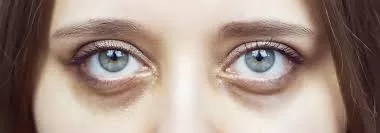
How Almond Oil and Vitamin E Help Treat Dark Circles
Almond oil and vitamin E are often highlighted as effective natural remedies for diminishing dark circles under the eyes. Both ingredients boast properties that contribute to skin health and rejuvenation.
Almond Oil Benefits:
- Rich in Nutrients: Almond oil is packed with vitamins and minerals that nourish the skin.
- Enhances Skin Tone: Its moisturizing effect helps improve skin tone and reduce pigmentation.
- Gentle Application: Due to its mild nature, it is safe for the delicate skin around the eyes.
Vitamin E Benefits:
- Antioxidant Power: Vitamin E is famed for its antioxidant properties, which protect skin cells from damage.
- Promotes Healing: It supports skin repair and revitalization, encouraging a healthier appearance.
- Hydration Booster: Vitamin E excels at providing moisture, keeping the skin plump and resilient.
How to Use Almond Oil and Vitamin E:
- Blend Evenly: Combine equal parts of almond oil and vitamin E to create a nourishing blend.
- Nightly Routine: Gently massage this mixture into the skin under your eyes before bedtime.
- Morning Rinse: In the morning, cleanse the area with cold water to freshen up.
- Consistency is Key: Repeat this ritual every night for the best results in reducing dark circles.
By incorporating this soothing duo into your skincare regimen, you can harness their natural properties to gradually diminish the appearance of dark circles.
Understanding Chemical Peels for Dark Circles
Chemical peels can be a game-changer for those struggling with dark circles under the eyes. Essentially, these treatments involve the application of a chemical solution to the skin, which exfoliates and eventually peels off. The renewed skin is typically smoother and shows less pigmentation.
How They Work
- Exfoliation and Renewal: Peels increase cell turnover, removing the upper layers of dead skin. This not only brightens the area but also reduces pigmentation, helping to alleviate dark circles.
- Targeted Ingredients:
- Glycolic Acid: Known for its small molecular size, glycolic acid penetrates deeply to treat pigmentation effectively.
- Retinoic Acid: This boosts collagen production, improving skin elasticity and reducing darkness over time.
- Hydroquinone: A powerful skin-lightening agent, hydroquinone specifically targets hyperpigmented areas for a more even skin tone.
- Custom Combinations: Dermatologists may recommend specialized peels like Jessner’s, which blends ingredients such as salicylic acid, lactic acid, and resorcinol. These combinations can offer a more intensive treatment, addressing stubborn pigmentation.
The Advantages
Chemical peels are a non-invasive option compared to surgical methods, making them a preferred choice for many. They not only tackle discoloration but also enhance texture, leaving the under-eye area looking refreshed and youthful. Always consult with a dermatologist to determine the most suitable peel for your skin type and pigmentation severity.
Understanding Blepharoplasty and Its Impact on Dark Circles
Blepharoplasty is a type of cosmetic surgery that focuses on the eyelids. Whether performed by a skilled plastic surgeon, oculoplastic specialist, or dermatologic surgeon, this procedure addresses various aesthetic concerns with the eyelids.
What Does Blepharoplasty Involve?
During a lower eyelid blepharoplasty, excess fat and sometimes skin are carefully removed or repositioned. This helps to create a smoother contour under the eye. By reducing the bulges or bags beneath the eyes, blepharoplasty can significantly diminish the shadows that contribute to the appearance of dark circles.
How Does It Improve Dark Circles?
Dark circles are often caused by shadows cast by puffy lower eyelids. By addressing the root cause—excess fat and sagging tissues—blepharoplasty can reduce these shadows. As a result, the area under your eyes appears brighter and more refreshed, giving your face a more youthful and rested look.
In summary, blepharoplasty is not just about aesthetics; it’s about enhancing the overall harmony of your facial features by minimizing dark circles efficiently and effectively through surgical artistry.
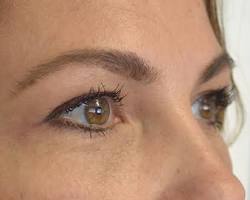
The Difference Between Dark Circles and Eye Bags
Dark circles and eye bags are often used interchangeably, but they’re not the same thing.
- Dark circles are about the darkening of the under-eye skin, often appearing bluish or purplish.
- Eye bags are puffiness or swelling around the eyes.
How to Reduce Dark Circles
While there’s no one-size-fits-all solution for dark circles, there are several strategies you can try to reduce their appearance:
How to Quickly Eliminate Dark Circles
Getting rid of dark circles swiftly involves a balanced approach tailored to your unique needs. While not every method works for everyone, these strategies are often effective:
Prioritize Sleep
Ensuring you get seven to eight hours of quality sleep each night can greatly reduce dark circles. Fatigue often exacerbates the appearance of these shadows. Adopt a regular sleep schedule and create a restful environment for better results.
Elevate Your Head
Try sleeping with extra pillows to elevate your head. This can prevent fluid from accumulating in your lower eyelids overnight, which reduces puffiness and minimizes dark circles.
Apply Cold Compresses
Using a cold pack can constrict blood vessels beneath your eyes, lightening the dark circles. Apply chilled spoons, gel masks, or ice packs for a few minutes daily.
Limit Sun Exposure
Excessive sun exposure can worsen dark circles. Wearing sunglasses or applying a broad-spectrum sunscreen with an SPF of at least 30 can protect this sensitive area.
Hydrating and Nourishing Creams
Select moisturizers that contain ingredients such as caffeine, vitamin E, aloe, and hyaluronic acid. These can replenish and revitalize skin, making dark circles less noticeable.
Cooling Cucumber Slices
Place chilled cucumber slices over closed eyes for about 10 minutes. This natural remedy can rejuvenate the skin and provide a refreshing reduction in dark circles.
Almond Oil and Vitamin E Blend
Combine equal parts of almond oil and vitamin E. Gently massage this mixture onto the dark circles nightly before bed. Wash off in the morning. This routine may gradually fade dark circles with consistent use.
Improve with Vitamin K
Opt for creams or eye pads containing vitamin K and caffeine. These ingredients may enhance circulation and diminish dark areas around the eyes.
Utilize Tea Bags
Refrigerate wet, caffeinated tea bags briefly and place them over your eyes for about five minutes. The caffeine helps to shrink blood vessels, reducing dark circles effectively.
Experiment with these methods to discover which combination best alleviates your dark circles. Always consider consulting a dermatologist for personalized advice.
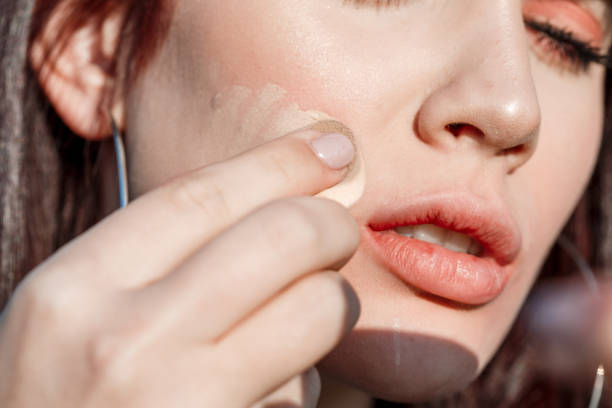
While there’s no one-size-fits-all solution for dark circles, there are several strategies you can try to reduce their appearance:
- Focus on sleep: Aim for 7-8 hours of quality sleep each night. Elevate your head slightly while sleeping to improve circulation and reduce puffiness from fluid pooling.
- Hydrate: Drinking plenty of water throughout the day helps keep your skin plump and hydrated, which can reduce the appearance of dark circles.
- Eye creams: Look for eye creams that contain ingredients like retinol, hyaluronic acid, or vitamin C. These ingredients can help improve skin texture, thicken the dermis, and reduce hyperpigmentation.
- Caffeine in skincare: Topical caffeine can help reduce puffiness by constricting blood vessels. Consider eye creams that incorporate this ingredient.
- Cooling techniques: Apply chilled spoons, cryotherapy tools, or chilled tea bags to the under-eye area to reduce puffiness and improve circulation. This method leverages the power of cold to address dark circles effectively. When you apply a cold compress, it causes the blood vessels under your eyes to constrict. This constriction reduces the flow of blood, which can lessen the darkness and swelling in that area. By incorporating these simple cooling techniques into your routine, you not only refresh tired eyes but also potentially diminish those pesky dark circles.
- Dietary changes: Ensure you’re getting enough vitamins, especially vitamin B12. Consider a dietary supplement if needed to support skin health.
- Concealer and color correction: Makeup can effectively hide dark circles. Choose a color corrector based on your skin tone to neutralize discoloration before applying concealer.
- SPF: Protect the delicate under-eye area from sun damage with SPF 30 or higher. Sun exposure can worsen dark circles, making sun protection a crucial step.
Additionally, you might try some natural remedies that many find effective:
- Cucumber slices: Chill thick slices of cucumber and place them on your eyes for about 10 minutes. This classic remedy can help soothe and refresh the skin.
- Almond oil and vitamin E: Mix equal parts almond oil and vitamin E, and gently massage this blend into the dark circles before bed. Wash off with cold water in the morning.
- Vitamin K: Incorporate this vitamin into your routine through skincare products or naturally, as it can help reduce the appearance of dark circles and wrinkles.
By combining these approaches, you can address dark circles from multiple angles, both naturally and with targeted skincare products, to find what works best for you.
How Can Cucumbers Be Used to Treat Dark Circles?
Cucumbers are a popular home remedy for reducing dark circles. Here’s a step-by-step guide on how to effectively use them:
- Chill the Cucumbers: Start by placing a fresh cucumber in the refrigerator for about 30 minutes. The coolness enhances the soothing effect on your skin.
- Slice the Cucumber: Cut the cucumber into thick slices. This thickness helps cover the entire area under your eyes.
- Apply to Eyes: Lie down and place a slice on each closed eye for approximately 10 minutes. The natural antioxidants and cooling properties of cucumbers help reduce puffiness and lighten dark circles.
- Rinse Your Face: After removing the cucumber slices, rinse your face with cool water to wash away any residual juice.
- Repeat Regularly: For best results, incorporate this routine twice daily, once in the morning and again before bed.
Using cucumbers is a simple and cost-effective way to enhance the appearance of your eye area naturally.
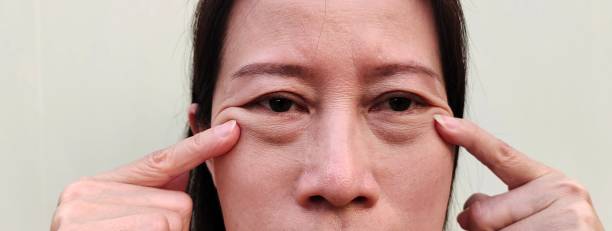
Additional Tips
- Filler: Injections can add volume if hollowness under the eyes is the cause of dark circles. This is a cosmetic procedure, so consult a qualified dermatologist or cosmetic surgeon.
- Antihistamines: If allergies are causing puffiness, antihistamines can help.
- Embrace them: Dark circles are a natural part of many people’s appearance. Learning to accept them can boost your confidence.
Can Dark Circles Be Removed Permanently?
When it comes to eradicating dark circles, the reality is that achieving permanent removal isn’t straightforward. Various factors, such as genetics, age, lifestyle, and skin type, play significant roles in their appearance. While eliminating them completely and permanently may not always be possible, you can significantly reduce their appearance with consistent effort.
Natural Remedies
- Adequate Sleep: Ensuring you get enough rest can help reduce the prominence of dark circles. Sleep rejuvenates the skin and aids in reducing puffiness.
- Home Ingredients: Items like cucumber slices, cooled tea bags, and almond oil are popular for their soothing and brightening effects on the skin.
- Vitamins: Incorporating vitamin-rich diets, particularly those high in vitamin C and E, can improve skin health and resilience.
Medical Treatments
- Topical Solutions: Products containing retinoids, vitamin C, or caffeine can help diminish dark circles over time.
- Professional Procedures: Consider options like chemical peels or laser therapy, which can promote skin regeneration and target hyperpigmentation.
Consistency is Key
While these measures can lighten and reduce the appearance of dark circles, they require ongoing commitment. It’s essential to understand that permanent removal is challenging, and most treatments are designed to manage rather than completely eliminate the issue.
Action
Ready to tackle those dark circles and achieve brighter, more radiant under eyes? Explore our collection of dermatologist-recommended eye creams and serums formulated to target dark circles and other under-eye concerns.
Shop Eye Care Products Now!
Disclaimer: While the tips in this guide can help reduce the appearance of dark circles, some cases may require professional evaluation and treatment. If your dark circles are persistent or accompanied by other concerns, consulting a dermatologist is recommended to determine the underlying cause and get personalized recommendations for the best course of action.
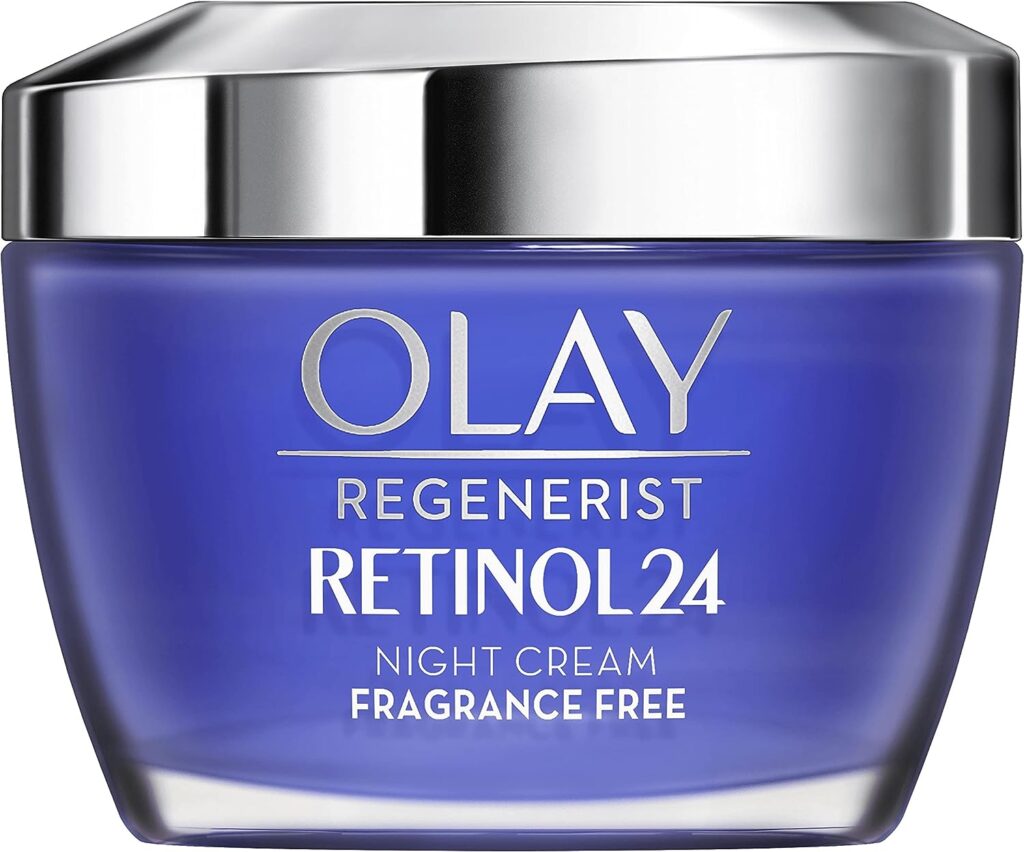
Olay Regenerist Retinol24 Night Face Cream Moisturiser With Retinol and Vitamin B3 50 ml, Fragrance Free
4.5 4.5 out of 5 stars 8,152 ratings

RoC – Multi Correxion Hydrate + Plump Eye Cream – 3-in-1 Formula – Fine Lines Reduction, Eye Contour Firming & Under-Eye Puffiness – Hyaluronic Acid & Caffeine – 15 ml
4.2 4.2 out of 5 stars 858 ratings
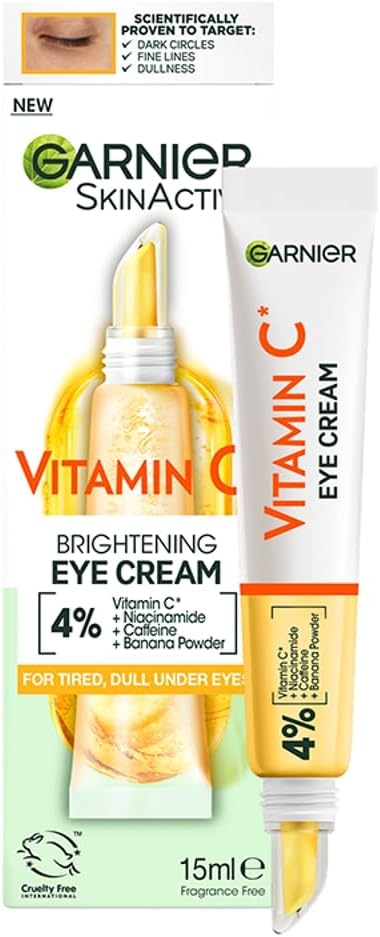
Garnier Eye Cream, With 4% Vitamin C, Brightening Eye Treatment For Dark Circles, Prevents Under Eye Bags And Puffiness, Vitamin C*, 15ml
4.2 4.2 out of 5 stars 740 ratings
For more skincare advice and product recommendations, fitness, and more, check out our other articles. @whereandhowresources
FAQ: Dark Circles Under Eyes
What causes dark circles under the eyes?
Dark circles can be caused by various factors, including aging, loss of volume and collagen, genetics, lifestyle habits (like poor sleep and dehydration), and strained eyes from prolonged screen time. Sun damage can also contribute to the problem by breaking down skin structure.
How can I reduce the appearance of dark circles?
To minimize dark circles, focus on getting adequate sleep, staying hydrated, and using eye creams with ingredients like retinol, hyaluronic acid, and vitamin C. Caffeine-infused products can also help reduce puffiness. Applying chilled tools or tea bags may improve circulation and decrease puffiness.
Are dark circles the same as eye bags?
No, dark circles refer to the bluish or purplish discoloration under the eyes, while eye bags are characterized by puffiness or swelling around the eyes. They can occur simultaneously but are distinct issues.
Can lifestyle changes really make a difference?
Yes, adopting a healthy lifestyle, including a balanced diet rich in vitamins, regular hydration, and sun protection, can significantly impact skin health and reduce the appearance of dark circles. Quality sleep is also crucial for overall skin appearance.
When should I consider professional treatments?
If dark circles persist despite lifestyle changes and topical treatments, consider consulting a dermatologist. They can recommend cosmetic procedures, such as fillers for volume restoration, or evaluate for underlying conditions that may need addressing.
However, if you notice swelling and discoloration appearing under only one eye, it’s essential to seek medical advice promptly. This symptom could indicate a more serious issue, especially if it worsens over time. Consulting a doctor in such cases can help rule out any underlying health concerns.
By addressing these symptoms with a healthcare professional, you can ensure that you’re not only treating the aesthetic aspect of dark circles but also taking care of your overall health.